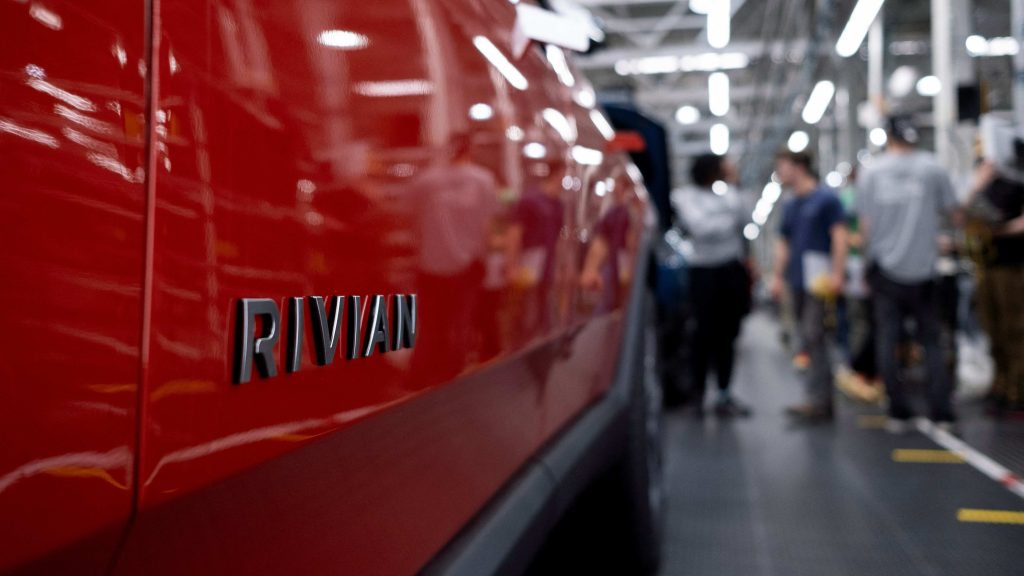
Rivian will be able to slash a fifth of its material costs from electric SUVs and pickups by the end of 2024, CEO RJ Scaringe said on Thursday, after a recent factory overhaul and a vehicle redesign to aid its push to profitability.
Shares of Rivian, which fell as much as 8.9%, were last down less than 3% after the company reaffirmed its largely flat annual production growth forecast.
The stock had risen 23% after its best-ever one-day gain of 23% on Wednesday after Volkswagen said it would invest up to $5 billion in Rivian as part of a joint venture for its EV architecture and software.
The move is widely seen as a “vote of confidence” in the American automaker’s prospects as it looks to build less expensive R2 and R3 crossovers. The tie-up with Volkswagen is expected to help reduce operating expenses at Rivian as production volumes rise.
COST SAVINGS
Scaringe also said material cost for its less expensive and smaller R2 vehicles will be 45% lower than its flagship R1 vehicles.
“Incredible focus and discipline around electronics in the vehicle will represent one of the biggest cost savings in R2 relative to R1,” Scaringe said at the company’s first investor day since going public in November 2021.
Rivian shut down its plant at Normal, Illinois for three weeks in April to make the changes, including simplifying processes and removing equipment at the facility, as well as eliminating over 500 parts from the vehicles in an effort to make them cheaper to build.
A similar exercise last year helped Rivian cut 35% in material costs from its electric vans, Scaringe told Reuters last week.
Amazon.com-backed Rivian lost about $39,000 per vehicle sold in the first quarter, but the company is confident it will post its first quarterly gross profit in the fourth quarter.
To save cash, Rivian plans to start making the R2 vehicles at its existing Illinois facility, instead of a planned plant in Georgia. The company is also renegotiating supplier contracts and building some parts in house to better control costs.
The company’s presentation during investor day also teased five new models, with three vehicles under the “affordable mass market” category.
LONG-TERM FINANCIAL TARGETS
Demand for electric vehicles has faltered amid high borrowing costs, and as buyers turn to cheaper gasoline-electric hybrid vehicles.
The slowdown has hit even market leader Tesla, which is expected to report its first drop in annual sales this year.
EV makers including Tesla have been cutting prices, offering incentives and introducing lower-priced variants to boost sales.
Rivian, however, is on stronger footing than most EV startups. Some of its peers such as Fisker have filed for bankruptcy.
In the long term, Rivian targets a gross profit margin of 25% and adjusted core profit margin in the high-teens, finance chief Claire McDonough said.
Rivian had nearly $6 billion of cash and cash equivalents at the end of the March quarter.
The company expects to produce between 9,100 and 9,300 units in the second quarter and hand over between 13,000 and 13,300 vehicles to customers in the April-June period.
Wall Street is expecting quarterly deliveries of 10,282 units and production of 9,369 vehicles, when the company reports quarterly figures on July 2, according to analysts polled by Visible Alpha.
The company has stuck to its production forecast of 57,000 for the year – roughly the same as 2023.
(Reporting by Akash Sriram in Bengaluru and Abhirup Roy in San Francisco; Editing by Sayantani Ghosh, Saumyadeb Chakrabarty, Maju Samuel and Shinjini Ganguli)